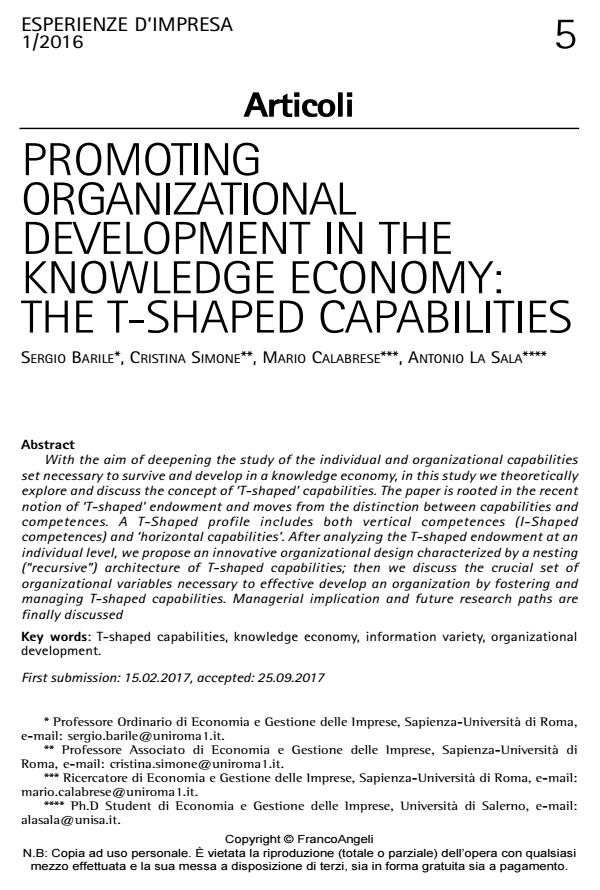Promoting organizational development in the knowledge economy: the t-shaped capabilities
Journal title ESPERIENZE D'IMPRESA
Author/s Sergio Barile, Cristina Simone, Mario Calabrese, Antonio La Sala
Publishing Year 2018 Issue 2016/1
Language English Pages 17 P. 5-21 File size 210 KB
DOI 10.3280/EI2016-001001
DOI is like a bar code for intellectual property: to have more infomation
click here
Below, you can see the article first page
If you want to buy this article in PDF format, you can do it, following the instructions to buy download credits

FrancoAngeli is member of Publishers International Linking Association, Inc (PILA), a not-for-profit association which run the CrossRef service enabling links to and from online scholarly content.
With the aim of deepening the study of the individual and organizational capabilities set necessary to survive and develop in a knowledge economy, in this study we theoretically explore and discuss the concept of ‘T-shaped’ capabilities. The paper is rooted in the recent notion of ‘T-shaped’ endowment and moves from the distinction between capabilities and competences. A T-Shaped profile includes both vertical competences (I-Shaped competences) and ‘horizontal capabilities’. After analyzing the T-shaped endowment at an individual level, we propose an innovative organizational design characterized by a nesting ("recursive") architecture of T-shaped capabilities; then we discuss the crucial set of organizational variables necessary to effective develop an organization by fostering and managing T-shaped capabilities. Managerial implication and future research paths are finally discussed
Keywords: T-shaped capabilities, knowledge economy, information variety, organizational development.
- 9th FEB International Scientific Conference: Sustainable Management in the Age of ESG and AI: Navigating Challenges and Opportunities Cristina Cervino, Francesco Caputo, pp.441 (DOI:10.18690/um.epf.5.2025.41)
Sergio Barile, Cristina Simone, Mario Calabrese, Antonio La Sala, Promoting organizational development in the knowledge economy: the t-shaped capabilities in "ESPERIENZE D'IMPRESA" 1/2016, pp 5-21, DOI: 10.3280/EI2016-001001